We decorate the kitchen with brick tiles

In recent years, decorative ceramic tiles for a brick-like kitchen have become an increasingly recognized trend, therefore they are no longer always used for the sake of originality - they are often a tribute to fashion. However, natural looking "brick" walls do not always suggest comfort, so it is worthwhile to figure out in more detail how to fit such a design solution into the interior.
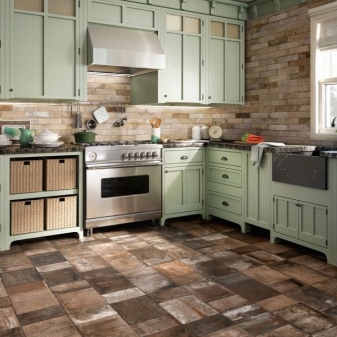
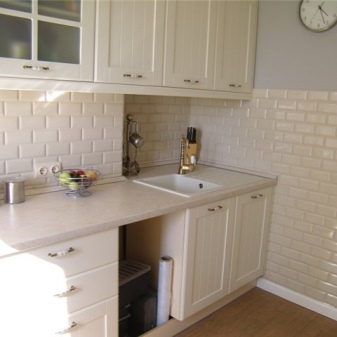
What types are used?
Tile imitating brickwork almost always looks about the same, but, in fact, may turn out to be different materials. Let's look at several popular varieties to highlight some of the fundamental differences.
- Tile - the most common option, it can be found in almost any apartment without reference to the "brick" design. The key advantage of this option is a smooth surface that allows you to effortlessly clean the coating, which is very important in a kitchen. Among other things, the tile is also distinguished by significant durability, and only a glossy surface, not quite typical for natural brick, can somewhat spoil the impression.

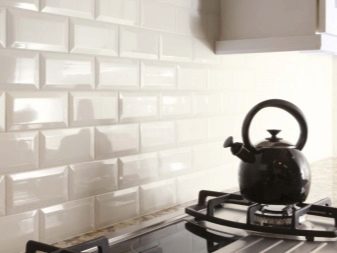
- Gypsum tiles in general, it is much less common, but in the case of an imitation brick design, it may be a good choice. The fact is that the texture of such a product is much closer to a real brick - you can easily create a characteristic roughness that allows you to make the "brick" more natural. This somewhat complicates surface care and does not always contribute to impressive durability, but the likelihood is very high.
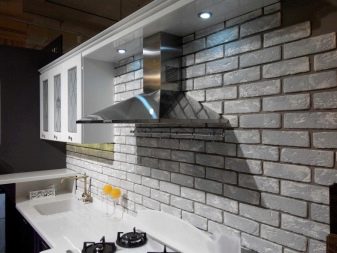

- Brick tile for brick - the most expensive of all the solutions described. This version of the tile undergoes special processing under extremely high temperatures, as a result of which it acquires special strength and durability - it is the clinker that is used for laying the pavements. Given the endurance of the material and its ability to withstand any adversity, it seems to be the optimal solution for kitchen conditions, and although the material is not cheap, it will easily last for several decades of operation.
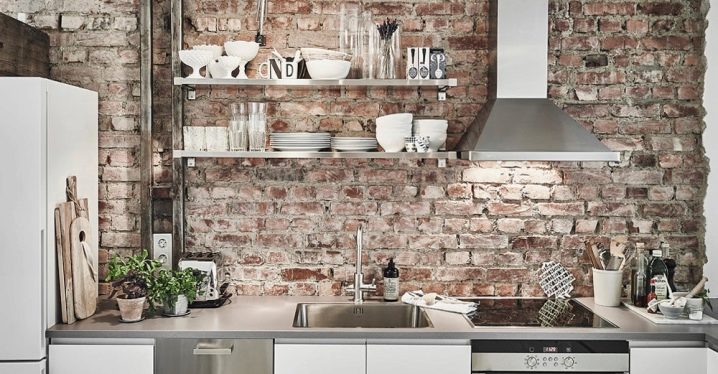
Decoration specifics
Brickwork allows you to add a touch of antiquity to the interior, but at the same time it can have a completely different appearance. For example, someone is trying to recreate the typical village spirit with the help of such imitation and focuses on maximum comfort, but lovers of a loft, on the contrary, can introduce some elements of "industrial" design into the atmosphere of the room with such a solution.
Naturally, depending on the goals set, the appearance of the tile itself, designed to play the role of decor, may also differ.
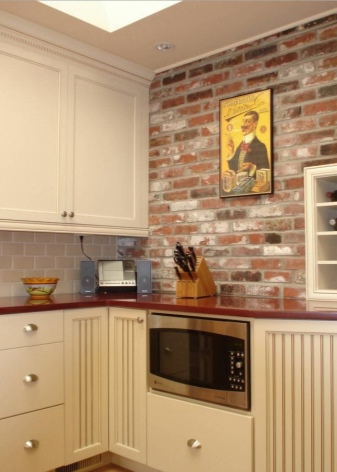
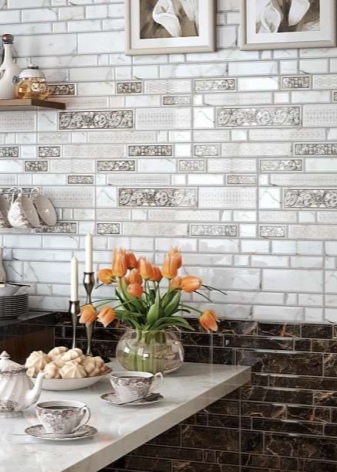
Some manufacturers in expensive series offer a very realistic and picturesque imitation of aged material, which conveys the slightest characteristics in detail - not only roughness, but also size, and even embossed protrusions. If you are not interested in country and Provence, but want a more modern kitchen, only slightly supplemented by antiquity, you just need to do with stylization - in this case, the "bricks" will more resemble those drawn, and no one will have a real impression of a brick wall.
Manufacturers of finishing materials do not forget about the needs of the most modern consumers who want to see a futuristic design - tiles with a metallic sheen are produced for them.
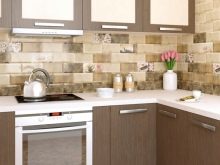

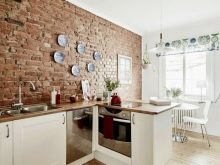
At the same time, a “bare brick” wall, for all its picturesqueness, is never comfortable if you overload the interior with it. Accordingly, such a finish is used mainly to highlight accents, you should not decorate the entire kitchen with it - it is better to choose a relatively small area.
Choosing a tile for a brick, focusing on its strength and durability, one should not forget that the material itself may be reliable, but the masonry is unsuccessful.
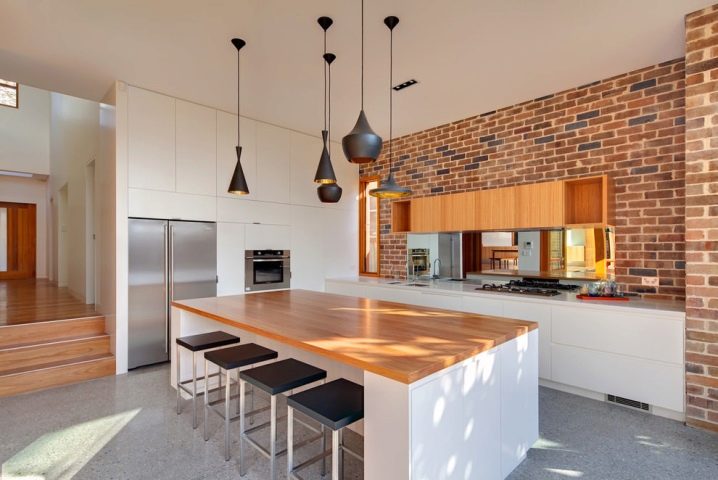
In this regard, it is worth paying great attention to the choice of glue and primer - for this it is not a shame to ask around a consultant in the store. In many cases to achieve the most durable result it makes sense to invite a master who knows his work well and will not allow childish mistakes. The same, by the way, applies to the development of the design - if you are not entirely sure that the result will look beautiful, it is better to order a design project, because a quick replacement of an expensive finish looks unjustified.

Interesting ideas
As already mentioned, it makes no sense to decorate the entire kitchen "like a brick" - this will definitely not add coziness to it. Accordingly, you need to choose the right place for an accent, therefore we will highlight some of the best and most common ideas of where in the kitchen there is a place for a "brick".
- Kitchen apron. A win-win option - it still needs to be finished with moisture-resistant material options. It takes up little space, but it immediately catches the eye and is favorably emphasized by the surrounding headset. If there is no top row of cabinets, ceiling-length masonry may also be appropriate.
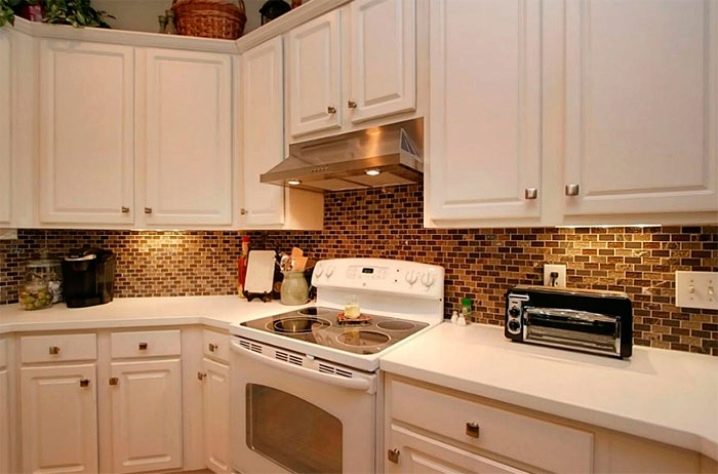
- Solid wall. This option is usually used if you want to highlight the entire wall as an accent. Often, this approach also divides the room into zones, so the space under the wall should be used in a special way - for example, for eating.
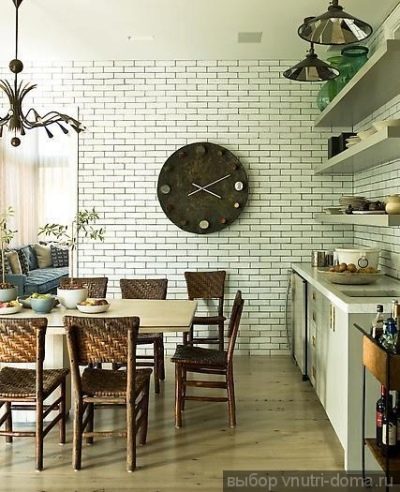
- Niche or ledge. Such an impregnation in the interior too often looks like a foreign body, so it makes sense to decorate it, if you can't get rid of it.
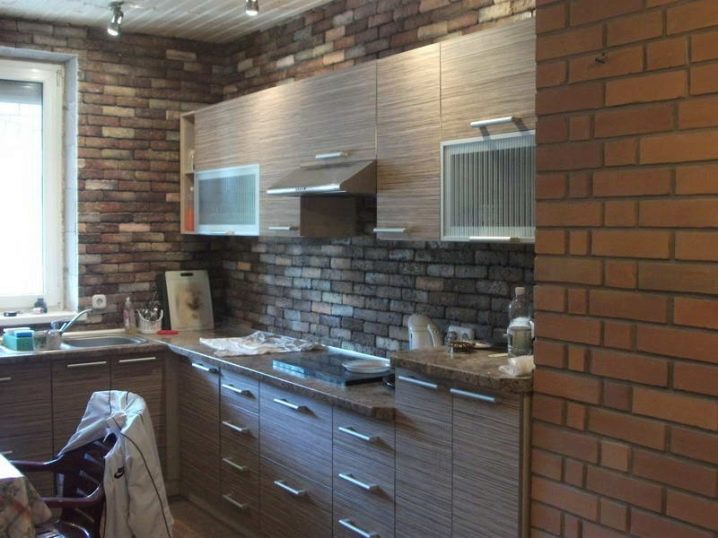
- Imitation of the hearth. Such a solution is appropriate mainly in the "rustic" French styles, but it looks very impressive. Something like a chimney is laid over the stove, which dramatically adds color.
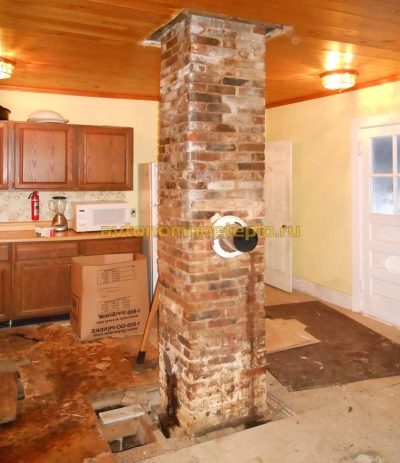
- Corners or openings. If the “brick” seems appropriate, but there definitely shouldn't be a lot of it, it is worth finishing a relatively small area with it - for example, a corner, a window or a doorway. In many cases, such repairs are disguised as a long absence of repairs.
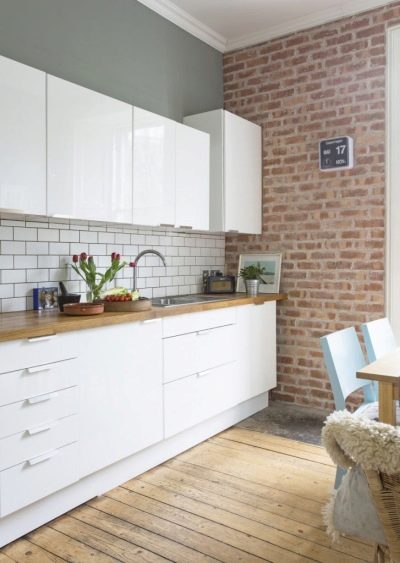
- "Island" and "Peninsula". If a bar counter or a free-standing countertop is inscribed in the interior, you can, instead of typical legs, make an imitation of brickwork under them, which will add massiveness and solidity to the interior.
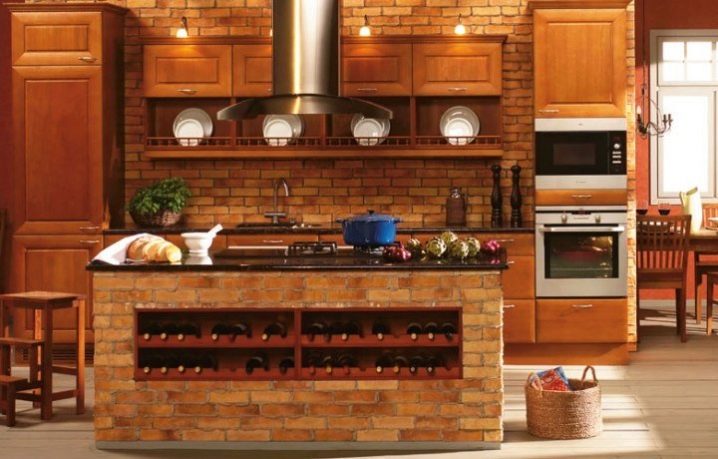
See the video below for all the nuances of laying tiles under a brick.













The comment was sent successfully.